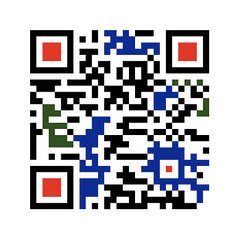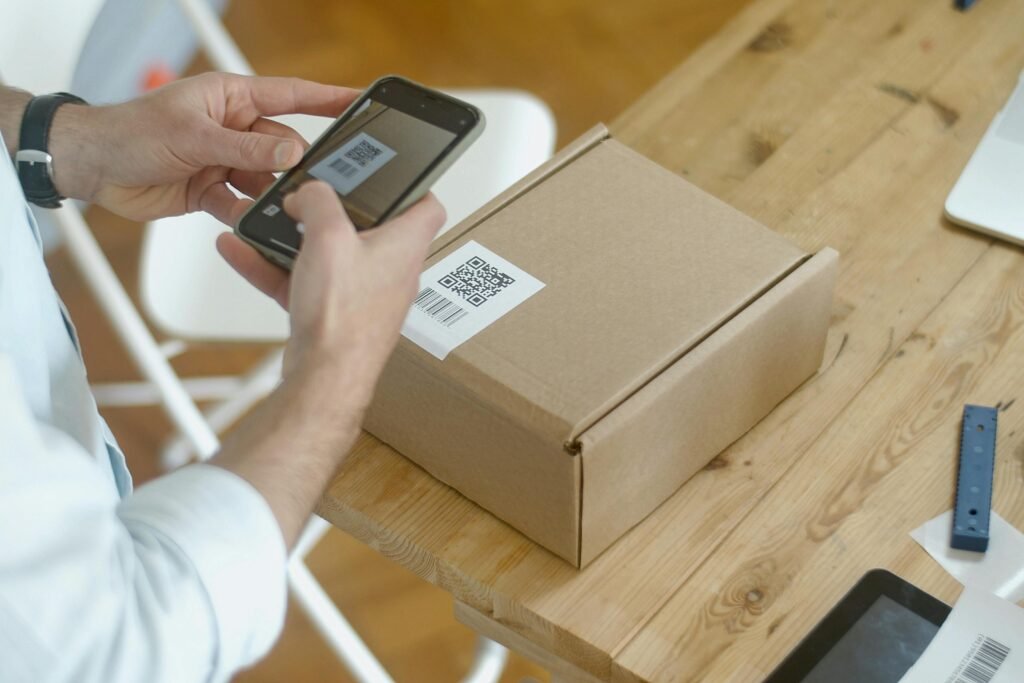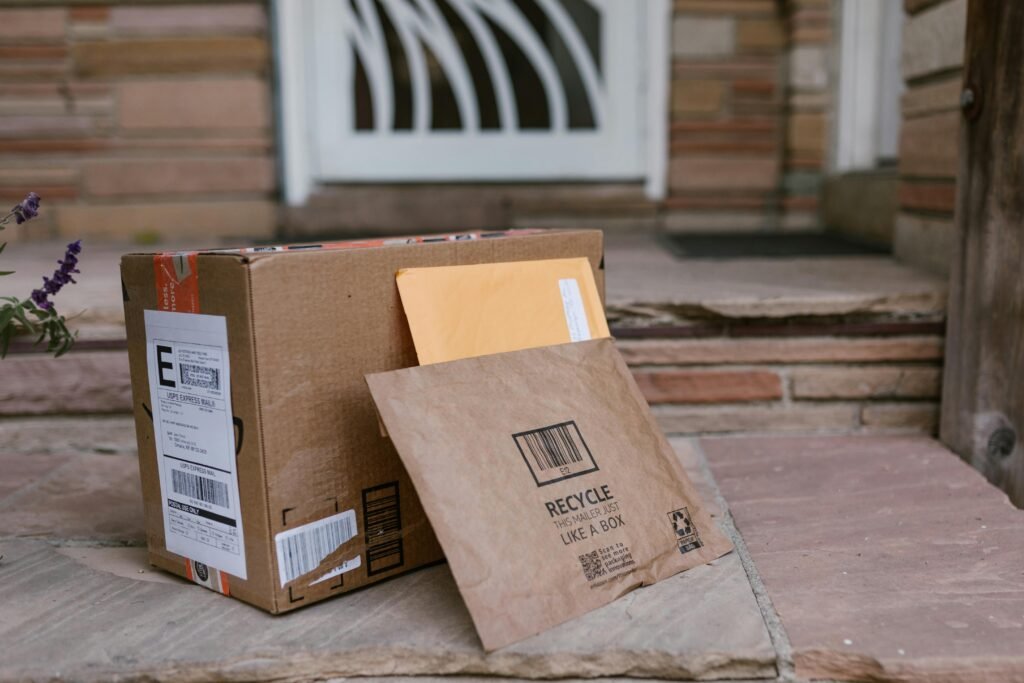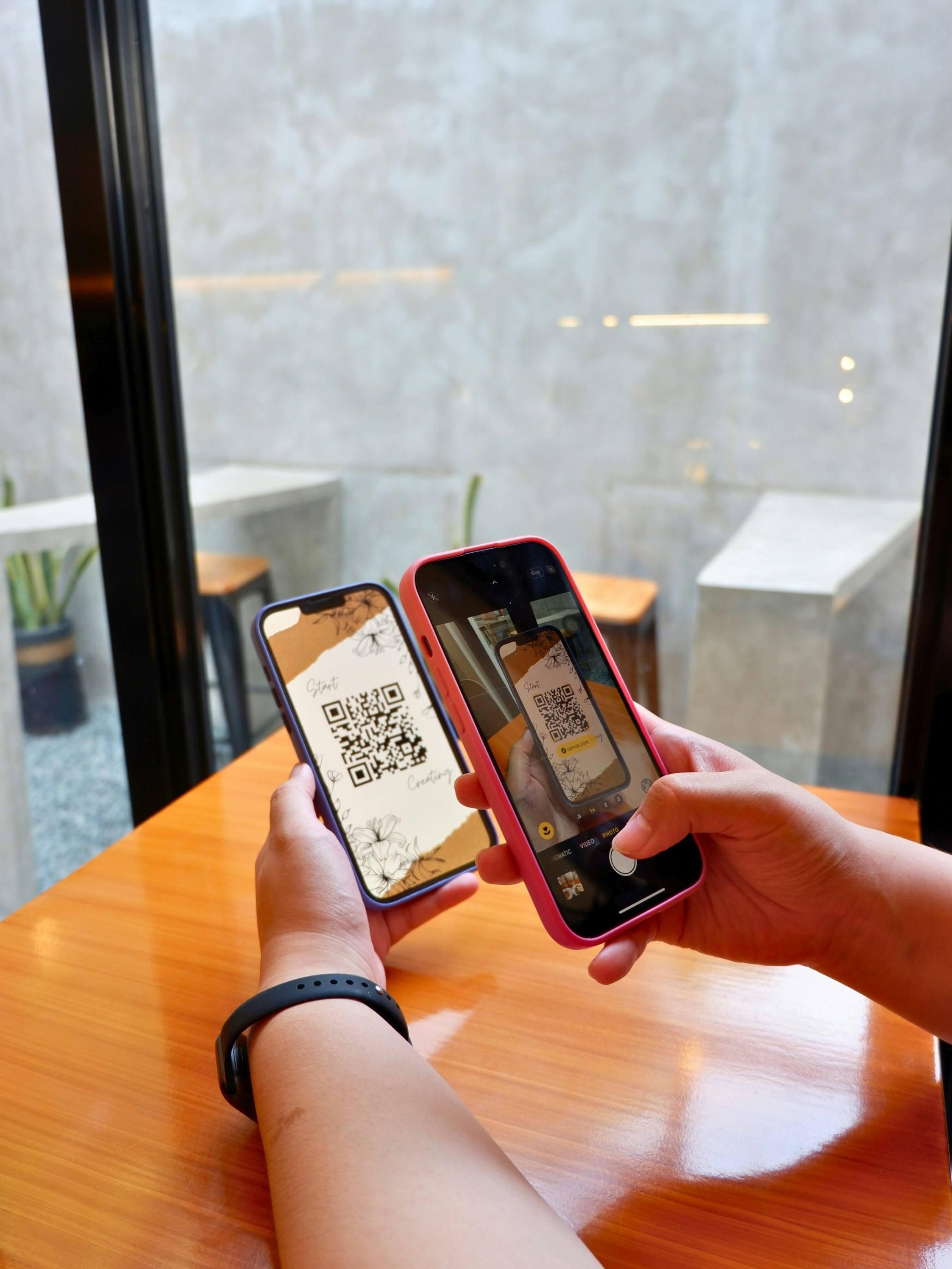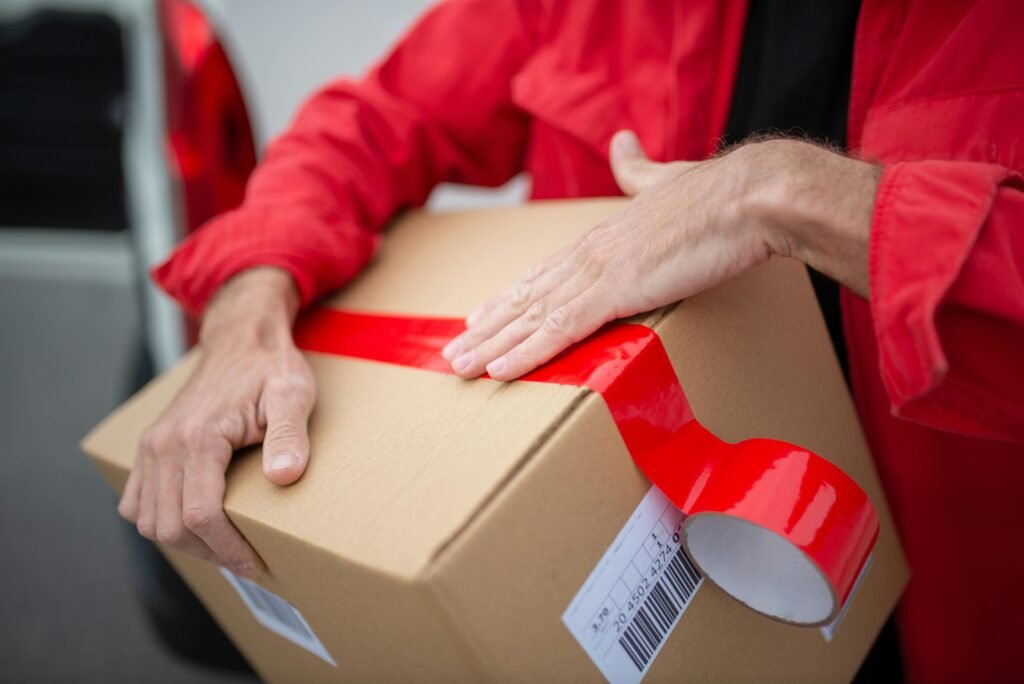Introduction to Barcodes
Barcodes are graphical representations of data that can be scanned and read by machines, primarily used for the identification and tracking of products. Originating in the early 1950s, the concept gained significant traction with the advent of laser scanning technology in the 1970s, revolutionizing inventory management and sales processes across various industries. Today, barcodes are ubiquitous, serving as essential tools in retail, manufacturing, logistics, and healthcare.
The primary function of a barcode is to provide a unique identifier for a product, enabling swift and accurate data retrieval. Barcodes are typically composed of a series of parallel lines, dots, or squares that encode alphanumeric information. This encoded information can include a product number, manufacturer details, and other relevant data points. When scanned using a barcode reader, the encoded message is translated back into readable form, ensuring that pertinent information is swiftly accessible.
Barcodes are distinguished into different types, the most common being one-dimensional (1D) and two-dimensional (2D) formats. 1D barcodes, such as UPC (Universal Product Code) and EAN (European Article Number), are primarily used in retail to facilitate sales transactions. Conversely, 2D barcodes, including QR (Quick Response) codes, can hold more information and are often utilized in marketing, allowing consumers to access websites or promotional content easily by scanning using a smartphone.
The significance of barcodes extends beyond mere identification; they contribute to operational efficiency and accuracy in tracking products throughout the supply chain. By minimizing human error and expediting processes, barcodes pave the way for improved inventory management and streamlined operations. Their role in enhancing productivity cannot be overstated, as they foster a more organized and traceable inventory system, ultimately benefiting both retailers and consumers alike.
Understanding Different Types of Barcodes
Barcodes have become an integral part of modern business operations, serving as a crucial tool for tracking products, managing inventory, and facilitating transactions. There are several types of barcodes, each designed for specific applications and industries. In this section, we will explore some of the most common barcodes, including Universal Product Code (UPC), European Article Number (EAN), Quick Response (QR) codes, and Code 128.
The Universal Product Code (UPC) is one of the most widely recognized barcodes, primarily used for retail products in North America. UPCs are composed of 12 numeric digits, which can be scanned easily using barcode scanners at point-of-sale terminals. This type of barcode allows for quick and efficient sales tracking and inventory management, enhancing the overall shopping experience for both consumers and retailers.
Similarly, the European Article Number (EAN) serves a comparable purpose in the global market. Predominantly used outside North America, EANs come in two main formats: EAN-13 and EAN-8. EAN-13, made up of 13 digits, is typically used for products in retail settings, while EAN-8 is designed for smaller packages where space is limited. Both types assist businesses in effective inventory management and product identification.
QR codes are a versatile and increasingly popular type of barcode, using a matrix of squares to encode information. Unlike traditional barcodes that require a scanner, QR codes can be read using smartphones equipped with cameras. This capability allows businesses to link consumers to websites, promotional material, or additional product information, bridging the gap between physical products and digital experiences.
Lastly, Code 128 is a high-density linear barcode that encodes alphanumeric characters. It is commonly applied in logistics and shipping, enabling the encoding of significant amounts of data in a compact format. Businesses benefit from using Code 128 as it allows for precise tracking of shipments, inventory control, and even identification of products in diverse environments.
Understanding these various barcode types and their specific applications enables businesses to choose the appropriate format that best meets their operational needs and enhances efficiency in product management.
Determining Your Barcode Needs
When considering the generation of your own barcode, it is essential to first assess your specific needs. This preliminary evaluation will enable you to select the most appropriate barcode type and format for your products. Begin by identifying the nature of the products you intend to barcode. Are they physical goods, digital downloads, or perhaps items needing tracking through a supply chain? Different products may warrant different barcoding strategies, as each category has unique requirements.
Next, it is crucial to determine the necessary barcode format. The most commonly used formats include UPC, EAN, and Code 128, among others. The choice of format often depends on where and how the barcode will be utilized. For instance, UPC codes are typically used in retail environments, whereas Code 128 is ideal for shipping and inventory management. Familiarizing yourself with the fundamental differences between these formats will facilitate proper selection for your application, ensuring compatibility with various scanners and systems.
Additionally, consider the quantity of barcodes you will require. Depending on your operations, you might need a single barcode for a unique product or multiple barcodes for different variations such as size or color. Bulk barcode generation may also be necessary for companies producing a high volume of items. Understanding the scale at which you need barcodes will help streamline the production process and save on costs. Engaging a barcode provider who offers scalable solutions can greatly simplify this aspect of inventory management.
By evaluating your products, selecting the appropriate barcode format, and determining the necessary quantity, you will lay a solid foundation for effective barcode implementation tailored to your operational needs.
Choosing the Right Barcode Generator
When it comes to generating barcodes, the selection of the right barcode generator tool is crucial. Various types of barcode generators are available, ranging from online tools, downloadable software, to mobile applications. Each option comes with its own set of functionalities, user interfaces, and pricing structures, making it essential to choose a tool that best fits your requirements.
Online barcode generators are typically easy to access and user-friendly, allowing users to create barcodes quickly without the need for any installation. They are ideal for those who require occasional barcode generation and prefer not to clutter their devices with many applications. Additionally, many of these online tools support multiple barcode formats, giving users flexibility in their design choices. However, they may have limitations concerning bulk generation and customization options.
On the other hand, downloadable software provides more robust features and the ability to generate barcodes offline. This is particularly beneficial for businesses or individuals who regularly create barcodes in high volumes or require advanced functionalities such as batch processing, inventory management integration, and more comprehensive customization options. The initial investment might be higher, but the long-term benefits could outweigh the costs.
Mobile applications are also gaining popularity for barcode generation, especially for on-the-go needs. These apps typically offer convenient scanning capabilities in addition to barcode creation. However, the features may vary widely among different applications, so it is imperative to review each option carefully.
When evaluating barcode generators, consider a checklist of features: barcode type support, user interface, editing capabilities, support for batch processing, and whether the generated barcodes meet industry standards. By matching these criteria with your specific needs, you can successfully choose the right barcode generator for your tasks.
Step-by-Step Guide to Generate a Barcode
Generating a barcode can seem daunting initially, but with the right tools and a clear tutorial, the process becomes straightforward. This guide details how to create a barcode using an online barcode generator. The steps outlined below will help you enter the necessary information, select the appropriate barcode format, and save your final product effectively.
First, select a reliable barcode generator tool. Several options are available online, and many offer free services to users. Once you have chosen a service, navigate to its homepage to initiate the barcode generation process. You will typically find a designated area to input your data, such as product information, a URL, or any other relevant details that you want the barcode to represent.
After entering your data, the next crucial step is selecting the barcode format. Various formats exist, including UPC, EAN, QR codes, and Code 128, among others. It is important to choose the format that best suits your needs; for instance, if you aim to create a barcode for retail products, UPC or EAN are often preferred formats, while QR codes are better suited for digital applications.
Once you have completed these tasks, review your inputs and selections carefully to ensure accuracy. It is advisable to double-check your information to avoid any deficiencies in the resulting barcode. After confirming that everything is correct, proceed to generate the barcode. Most generators will provide a button labeled ‘Generate’ or ‘Create’ to finalize this step.
Finally, you will need to save the created barcode for future use. Look for download options which may include various file formats such as PNG or PDF. Select a format that suits your needs and save the file to your device. With these steps complete, you now have a functional barcode ready to be utilized in your specific context.
Customizing Your Barcode
Customizing a barcode can enhance its visual appeal while maintaining its functionality. When generating your barcode, there are several aspects you can modify, such as the inclusion of logos, adjustment of colors, and alteration of size. Each of these elements plays a crucial role in ensuring that the barcode remains effective for scanning purposes.
One of the most popular customization options is the addition of a logo. Incorporating your company’s logo into the barcode can help in brand recognition and marketing efforts. When placing the logo, ensure that it does not obscure any significant elements of the barcode itself, as this could impair scannability. Experts advise keeping the logo size at a maximum of 30% of the barcode area to maintain functionality.
The color scheme of your barcode is another area open for customization. While traditional barcodes are typically black and white, altering colors can create an attractive and branded appearance. However, choosing colors requires careful consideration. Ensure high contrast between the barcode lines and background. For example, dark bars on a light background or vice versa will optimize visibility and scanning efficiency. Additionally, avoid light or similar hues for both the bars and background, as this can lead to scanning difficulties.
Another vital aspect is the size of the barcode. The dimensions of your barcode should align with the intended use case. If you plan to print the barcode on small labels, dimensions must be adjusted accordingly. However, it is important to note that excessively small barcodes can become difficult to scan. The minimum recommended size is usually around 1 inch by 2 inches, depending on the type of barcode being used. Testing the barcode at various sizes can help determine the optimum dimensions for your requirements.
By carefully customizing elements such as logos, colors, and size, you can create a visually appealing barcode while ensuring it is maximally functional. Following these tips will help maintain the efficacy of your barcode as a vital tool for tracking and identification.
Testing Your Barcode
Once you have generated your barcode, it is crucial to conduct thorough testing to ensure its functionality and reliability. Testing your barcode helps confirm that it can be scanned correctly by various devices and apps, and aids in identifying any potential issues before it is widely used. There are several methods available to verify the effectiveness of your barcode.
Initially, it is advisable to check the barcode in a controlled environment using a barcode scanner. These devices are designed to capture and interpret the barcode information effortlessly. Start with a high-quality scanner that supports the specific type of barcode you have created. Scan the barcode multiple times to see if it consistently produces the correct output. Any discrepancies or failures in scanning can signal problems with barcode quality, format, or printing issues that need to be addressed.
In addition to standard barcode scanners, you can also utilize smartphone apps specifically developed for barcode reading. Many of these applications are available for both Android and iOS devices, allowing you to conduct tests on accessible platforms. Testing your barcode using various scanning apps can provide insights into how it performs in real-world scenarios, where lighting and distance might differ. Ensure you test with multiple devices, as variations in technology can impact barcode readability.
Moreover, it is beneficial to carry out tests across different sizes and print qualities. Print the barcode using different printers and materials, as variations in resolution and clarity can affect scanning rates. Conduct tests with different lighting conditions to assess how the barcode performs in diverse environments. This comprehensive testing approach will help establish that your barcode meets functionality standards, ensuring it is a reliable tool for your intended applications.
Applications of Self-Generated Barcodes
Self-generated barcodes have become increasingly popular across various industries due to their versatility and efficiency. One of the primary applications of these barcodes is in inventory tracking. Businesses can create unique barcodes for each product, enabling easy scanning and monitoring of stock levels. This not only accelerates the inventory process but also reduces human error, leading to more accurate records and improved management of supplies.
Another significant application is product labeling. Retailers often use self-generated barcodes on their merchandise to facilitate sales and track items. By assigning unique barcode numbers to each product, companies can streamline the checkout process and manage pricing with minimal complications. This method is particularly beneficial for e-commerce businesses that require precise product identification and efficient order fulfillment.
Additionally, self-generated barcodes find practical application in event ticketing. Many event organizers are now using barcodes to enhance the entry experience. By generating unique barcodes for each ticket, organizers can ensure a smooth and quick check-in process, significantly reducing waiting times for attendees. This application can be extended to various events, including concerts, conferences, and sporting events, highlighting how versatile self-generated barcodes can be in different contexts.
Moreover, the use of barcodes in healthcare settings cannot be overlooked. Hospitals and clinics utilize self-generated barcodes for patient identification and medication administration. Barcodes can aid in ensuring that the right patient receives the correct medication, thus minimizing the risk of errors and enhancing patient safety.
In conclusion, the applications of self-generated barcodes are extensive and diverse. From inventory tracking to event ticketing and healthcare, they provide practical solutions that enhance organizational efficiency and accuracy across various sectors. The ability to generate and implement these barcodes empowers individuals and businesses alike to adapt and innovate in numerous ways.
Conclusion and Final Tips
In summary, generating your own barcode is a straightforward process that empowers businesses and individuals to efficiently track products, manage inventory, and streamline operations. Throughout this guide, we have covered the essential steps involved in barcode creation, from selecting the appropriate barcode type to utilizing various software tools for generation. This knowledge is crucial not only for enhancing productivity but also for ensuring accurate data management.
When creating barcodes, it is important to choose the right type based on your specific needs. For example, UPC and EAN codes are typically used in retail, while QR codes can store more information and are versatile for marketing purposes. Familiarity with your requirements will guide the selection process, ultimately resulting in a more efficient system.
Additionally, it is advisable to maintain consistency in barcode dimensions and quality standards. High-resolution barcodes are easier to scan, thereby reducing operational errors and improving customer satisfaction. Regular testing of scanning equipment can also help ensure that barcodes remain readable throughout their lifecycle.
As you incorporate barcodes into your operations, consider the integration of barcode management software, which can streamline tracking and enhance data accuracy. Keeping your barcode database updated is equally important, as it ensures that product information remains current and accessible.
Creating your own barcodes opens up various opportunities for enhanced organization and efficiency. By following the outlined steps and tips, you can successfully implement a barcode system tailored to your particular needs. Embrace the advantages of barcode technology, and leverage it to boost your productivity, enhance tracking capabilities, and improve your overall operational processes.
© barcodly.com- All rights reserved

